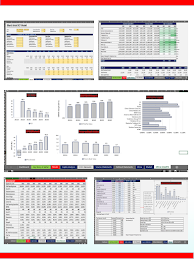Airtel Valuation: Will beat the Jio?
Airtel Valuation
1) Story of Airtel:
Bharti Airtel was incorporated in 1995 by Sunil Bharti Mittal. He belonged to a political family but he wanted to do business since his early years. In his early business days, he did trades in cycle components and motors but later he started importing telephones and sold them in India and this was the beginning of his Telecom journey.
Airtel business was affected very badly when jio entered into the race telecom. Jio changed the whole dynamics of the industry and many telecom players vanished away after its entry, but airtel was the only strong player that was left on the ground of the Telecom War. However, it had to reduce its charges to ~1/10 to match with jio for survival.
Fast-forward, now, Airtel is not only the survivor instead it emerged as a strong competitor of Jio. The marketing strategies and risk management strategies of the company are the several reasons that helped them in the volatile times. Now Airtel has more than 400 million users including Africa. It operates in Mobile wireless, DTH services, Data centers, Ads, Cloud computing, and Broadband services. It focuses on customer experience more than its competitors.
Furthermore; tariff hikes, rising smartphone penetration, rising internet users, upcoming 5G technology, cloud computing, rising demand in African emerging countries, and decreasing cost of operations such as zero SUC and less paperwork are the core growth driver of the company. In the Upcoming 5 years and so, the company’s revenue growth will be high depending on its 2G & 3G conversion into 4G or 5G as only 64% of the users use the 4G network, it also depends upon how successful its ecosystem strategy will pay off in the future.
In Addition, I do believe that there will remain a high risk in this
industry because of the technological aspects & high competition, although
there is an entry barrier in this industry as a high capital requirement,
Government approval, and customer stickiness. I have assumed in my Valuation
that it will grow at a decent pace in the first 4 or 5 years period after that
it will grow at a slightly higher pace than the average of its Global peers and
industry growth.
2) Global Peers

India's ARPU (Average Revenue Per User) is very low when you look at it in an absolute Dollar manner.
3) Sector Overview
The Telecom industry in India is the second largest in
the world with a subscriber base of 1.17 bn as of April 2022 (wireless +
wireline subscribers). India has an overall teledensity of 84.88 %, of which,
the teledensity of the rural market, which is largely untapped, stands at
58.16% while the teledensity of the urban market is 134.70%. By the end of
December 2021, the total number of internet subscribers increased to 829.3 Mn
(narrowband + broadband subscribers), out of which 37.25% of the internet
subscribers belong to rural areas.
It is also estimated that 5G technology will contribute
approximately $450 bn to the Indian Economy in the period 2023-2040. The Telecom sector is in Sim
consolidation as the churn rate of the players has decreased drastically.
ARPU growth has been seen for all telecoms, led by the residual benefit of tariff
hikes.
In Addition to that, in spectrum bidding, Jio purchased
48 percent of the spectrum sold by offering Rs 88,000 crores. Airtel acquired
39 percent of the spectrum sold for Rs 44,000 crores. Vodafone got 12 percent of the spectrum sold by spending Rs 19,000 crores. Furthermore, expectedly, Adani Data
networks joined the bidding and paid Rs 212 crores for acquiring a bandwidth of
400 MHz in the high band.
A few weeks ago, Government also announced a revival package for BSNL of 1.5
lakhs crores because of privacy issues on borders and reach in unprofitable
corners of our nation which is hard to tap by private players.
4) Valuation's Logic

- I have given 17% to 19% revenue growth and 26% to 32% EBIT growth for the next five years. After that, growth will be slowed down as per my valuation. I have also discounted the 5G enrollment for the first 5 years of the company
- I have assumed 30% tax rates for all years. In addition, I have taken 0.7 Sales to Capital ratio and increased it by 5% every year and in the terminal year, it will remain constant at 0.7 because I think the telecom sector is a very Capital intensive business.
- WACC: Calculating the Wacc was the most exciting part of the valuation because I did not expect that Wacc could be 7.9%. It has a lot of debt in the book which has a low-interest rate and on the other hand, CoE (Cost of Equity) is around 8.8% because of the low beta in the telecom sector. Therefore, Wacc is around 7.93%. Although It will increase as the company reduces its debt in the future but I have assumed it constant in my valuation.
- I have given 4% growth for Terminal Value (TV) as TV should be less than the GDP growth of the nation in which the company operates.
- Finally, I have come up with a value per share of RS 789 for my base case and RS 926 for my optimist case. However, if we take a mean of both the value we will come up with RS 858.
- As per my Equity Research Report, the mean (Rs 858) is the target price for 12 -15 months. However, the current price is around Rs. 766 (12% upside).









